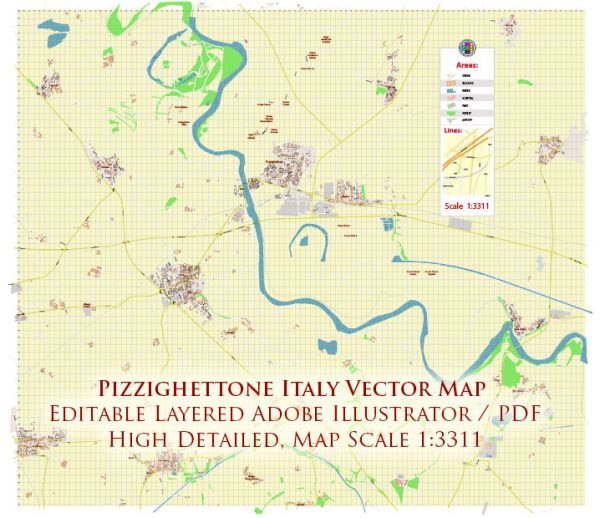Pizzighettone is a charming town located in the Lombardy region of northern Italy, near the confluence of the Adda and Oglio rivers. The town has a rich history that spans many centuries, and its urban development reflects the changes and influences of various historical periods.
- Ancient Origins: Pizzighettone’s history can be traced back to ancient times, with evidence of Roman settlements in the area. The strategic location at the meeting point of two rivers made it an important crossing and trade point.
- Medieval Period: The medieval period saw the construction of defensive structures to protect the town from invasions. Pizzighettone became a fortified settlement with walls and towers, and it played a role in the struggles between the Guelphs and Ghibellines during the Middle Ages.
- Visconti and Sforza Rule: During the Renaissance, Pizzighettone fell under the rule of the Visconti and later the Sforza families, influential rulers in the Duchy of Milan. The town continued to prosper, and architectural developments reflected the artistic and cultural influences of the time.
- Spanish Dominion: In the 16th century, Pizzighettone came under Spanish dominion. The Spanish influence is still visible in some of the town’s architecture and traditions. The Spanish military engineer Pompeo Targone designed the impressive fortress that stands at the confluence of the rivers.
- Napoleonic Era: The Napoleonic era brought significant changes to Pizzighettone. The town became part of the Cisalpine Republic and later the Kingdom of Italy under Napoleon’s rule. The fortress was adapted for military use during this period.
- Post-Unification Period: After the unification of Italy in the 19th century, Pizzighettone experienced economic and social changes. The town gradually expanded beyond its medieval walls, and new buildings were constructed to accommodate the growing population.
- Modern Times: In the 20th century, Pizzighettone, like many Italian towns, underwent further urban development. The town has managed to preserve its historical charm while embracing modern amenities and infrastructure.
Today, Pizzighettone is known for its well-preserved medieval architecture, including the impressive fortress and the town walls. Visitors can explore narrow streets, picturesque squares, and historical landmarks that tell the story of its rich past. The confluence of the Adda and Oglio rivers remains a defining feature of the town, adding to its scenic beauty and historical significance.


 Author: Kirill Shrayber, Ph.D.
Author: Kirill Shrayber, Ph.D.